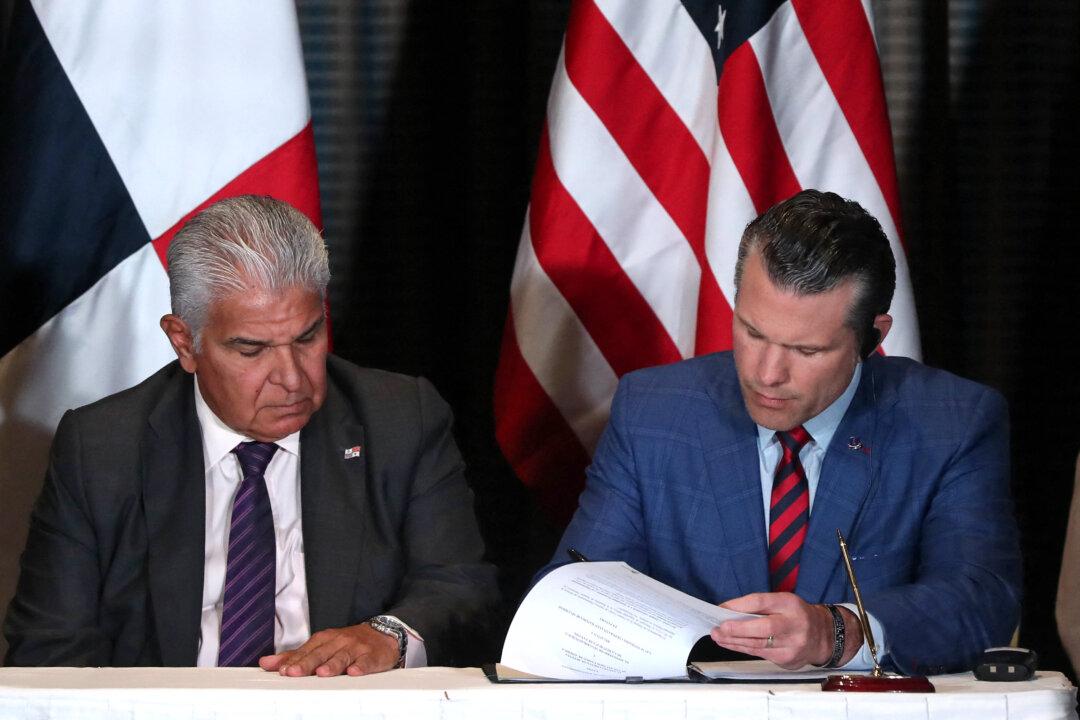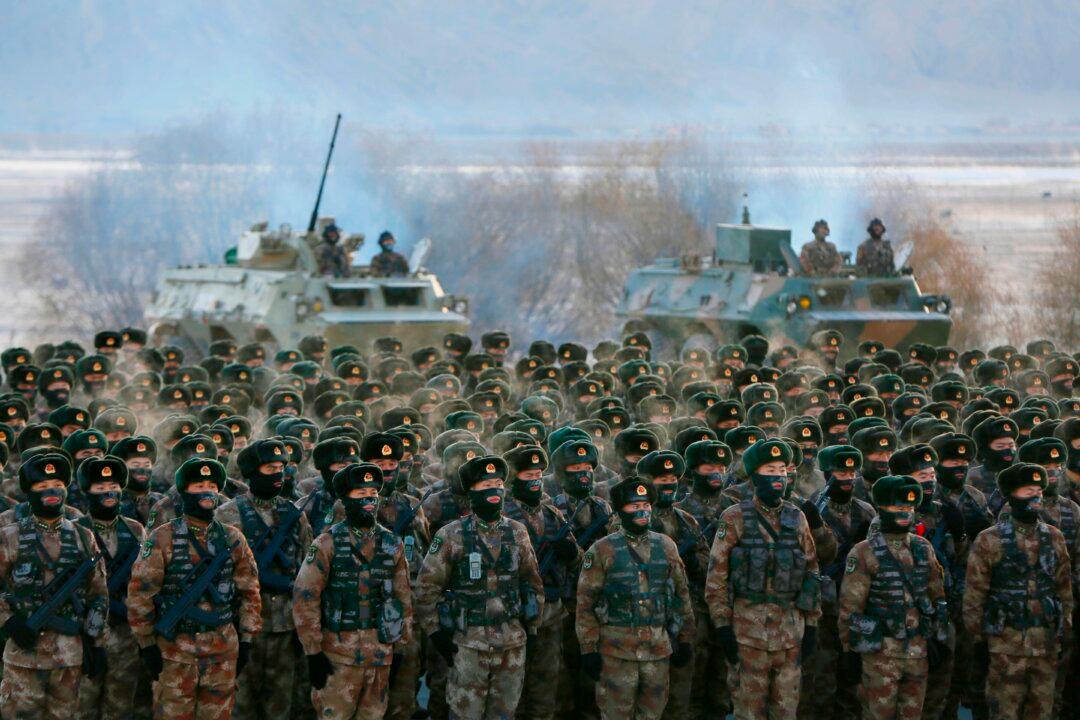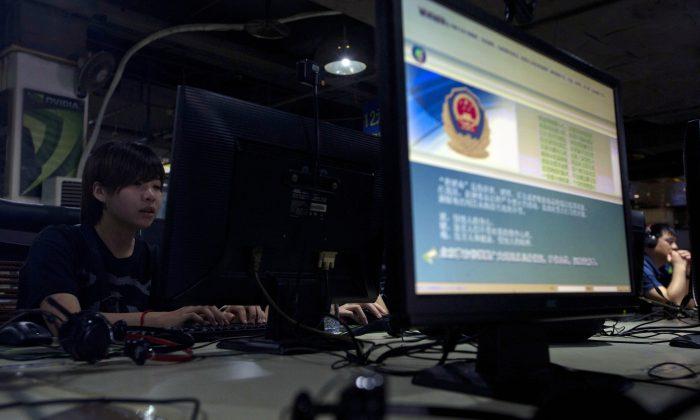Commentary
China engaged in another “joint combat readiness patrol” around Taiwan on Oct. 27, according to the Taiwanese Defense Ministry. The patrol included at least 19 People’s Liberation Army (PLA) aircraft. Su-30 fighter jets and PLA Navy warships participated in the exercise. The intimidation tactics were in apparent protest of Washington’s approval of a $2 billion arms sale to Taiwan, including radar and the battle-tested National Advanced Surface-to-Air Missile Systems (NASAMS). In this case, as in the past, the United States is doing well by doing good.
NASAMS has proven air defense capabilities, including the ability to launch AIM-9X Sidewinder Missiles. According to Ukrainian media, NASAMS destroyed more than 100 enemy missiles and drones over the course of five months up to spring 2023 in that country. That the United States is now planning to send NASAMS to Taiwan, despite ongoing needs in not only Ukraine but also Israel, indicates that the threat of conflict over the island democracy is increasingly real.
Xi Jinping instructed the PLA to prepare for invading Taiwan as early as 2027, which could start with a blockade of its ports, including airports. However, Taipei does not seem particularly intimidated by Beijing’s crusade against the island’s independence.
Taiwan’s president, Lai Ching-te, has said that Taiwan does not need to declare independence as it is already de facto independent. He visited Taiwan’s Kinmen Island, about two miles from mainland China, on Oct. 25, vowing not to give up an inch of its territory or any other part of Taiwan.
Lai is up against the PLA’s preparation for war, which includes an increasing tempo of military exercises around Taiwan. In the PLA’s “Joint Sword-2024B” exercise on Oct. 13 and Oct. 14, for example, the Taiwanese Defense Ministry observed 153 aircraft, 14 naval vessels, and 12 Chinese ships in an operation that the PLA described as sealing off key areas, including ports, around Taiwan. On Oct. 22 and Oct. 23, the PLA began live-fire drills and sailed the Liaoning aircraft carrier group through the Taiwan Strait, launching fighter jets southeast of the island.
Taiwan’s defense chief noted on Oct. 23 that a blockade of Taiwan that stopped ships and aircraft from entering the country would be an “act of war” according to international law.
In addition to bolstering Taiwan’s defenses through radar, surface-to-air missiles, and the like, the Taiwanese Ministry of Agriculture is preparing a civilian defense strategy that includes stockpiling food in case of conflict. In a report made public on Oct. 22, the ministry outlined its wartime food plan, which includes interior ponds for three months of fishing in case its fishing fleet cannot access the sea and a seven-month rice stockpile distributed evenly across the country in nearly 1,000 grain silos. In case of war, the country would increase the cultivation of soybeans, sweet potatoes, and fresh vegetables. Rice would be rationed.
Natural gas will be in high demand, with only an eight-day reserve currently on the island. New natural gas receiving stations are meant to increase reserves to 14 days. The resupply of oil and natural gas in case of war would likely be a chokepoint, in which case Taiwan could turn to its coal-fired power plants. Taiwan has about five months’ worth of coal and oil reserves, plus another 190 million tons of coal underground. In the case of oil, imports would shift from any Middle East autocracies that support China to the United States and Indonesia.
Increasingly frequent military exercises around Taiwan are geopolitically destabilizing, as a war there could cost millions of lives and trillions of dollars, including in lost trade. Such a war must be avoided.
The United States and allies can deter war and help Taiwan preserve its democracy—serving as a seed to democratize mainland China someday—by providing more powerful military technology, training, and personnel to serve as a “tripwire” in case the Chinese regime invades.
A coalition of the willing is already emerging. On Sept. 14, a German frigate and oiler transited the Taiwan Strait. Eleven days later, Japanese, Australian, and New Zealand naval ships followed suit. On Oct. 20, the United States and Canada sent a destroyer and frigate through to demonstrate resolve. The European Parliament in Brussels voted 432–60 on Oct. 25 to denounce Beijing for distorting history and international rules and engaging in military operations, disinformation, and economic coercion in its attempts to assert control over Taiwan.
President Joe Biden has said that he would militarily defend the island, and President-elect Donald Trump has said that Taiwan should pay the United States what amounts to an insurance premium to defend the island. This would deepen the commitment of the United States to defend Taiwan in case of attack. NATO could also open offices in Taiwan, Japan, South Korea, and Australia, all of whom could deepen their stated commitments to defend the island.
While some may claim that these actions provoke Beijing, the reality is that the PLA has been trying to capture Taiwan since 1949; 20,000 PLA troops set off for Kinmen that year but were defeated. So no provocation is needed when it comes to the Chinese Communist Party’s thirst for more territory.
The key, as in 1949, is for those who value their independence to show a unified front. Now, democracies such as the United States, Europe, Japan, Australia, and New Zealand are joining in. Showing no fear is critical to deterring a bully, and in this, the democracies are well on their way.





